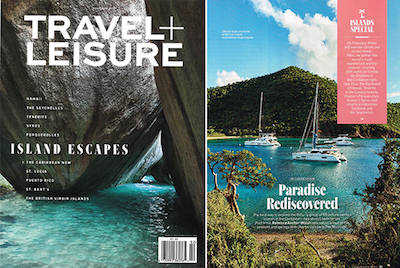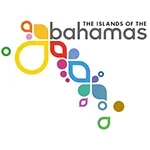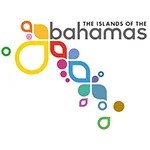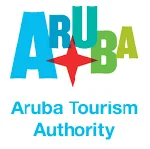 Lauren Kaufman Lauren Kaufman |
Crises aren’t planned, they happen. But you can plan for a crisis. Are you prepared?
From hurricanes to infectious diseases, we must always be ready to navigate a crisis. While many of us have inadvertently become experts steering through the pandemic, we must proactively apply best practices learned to a plan that will help mitigate the next crisis.
Get this: according to research from The Conference Board’s C-Suite Outlook 2023, only 50 percent of CEOs feel their brands are prepared for a major crisis. Just half! In today’s fast-moving media ecosystem, news of an incident can spread globally within minutes, and a single crisis can have devastating and long-term consequences.
As PR leaders, it’s our job to get ahead of situations. Our crisis communications experts at MMGY NJF audit client destinations and brands to determine potential risk factors and levels of preparedness to alleviate fallout. We’ve found most issues can be broken into two categories: dangerous situations and reputational crises.
Dangerous situations like natural disasters, terrorist attacks, political unrest and violent crimes come hard and fast with immediate protocols needed. Once the imminent threat has passed, the aftermath can—and usually will—lead to a reputational crisis. Addressing and turning around negative perceptions and traveler sentiment is of utmost importance.
When weather strikes
The effects of climate change mean that natural disasters such as hurricanes, floods and wildfires are only going to grow more intense and leave more damage in their wake. As the East Coast recently experienced, wildfires burning 500 miles away in Canada greatly impacted cities and communities, effectively shutting down activities and events at a moment’s notice.
| This article is featured in O'Dwyer's July '23 Travel & Tourism PR Magazine (view PDF version) |
When a natural disaster makes a direct hit on a destination and the recovery period is long, a dangerous crisis can quickly turn into a reputational one. PR efforts require constant vigilance and the flexibility to adapt messaging as conditions change.
After Hurricane Ian caused catastrophic damage to our client Lee County, Florida (Fort Myers-Islands, Beaches and Neighborhoods), in September 2022, we immediately adapted our crisis playbook to manage the situation. Starting with in-the-moment updates of rescue and cleanup efforts, we pivoted to messages communicating that most of the destination would be closed to tourism for the time being. We shared stories of resilience and goodwill as locals rallied together, allowing us the opportunity to spotlight the strong sense of camaraderie that makes this community so special.
As more and more areas and businesses began to reopen, we focused our efforts on educating the public and changing their perceptions of a destination hit by disaster. We shifted our pitch strategy from coastal activities to inland adventures, gathered intelligence on voluntourism opportunities and spotlighted local wildlife recovery. By activating journalists, influencers and local ambassadors, the message became clear: The Fort Myers area is on a path to recovery and welcoming visitors once again. In June 2023, this was underscored by a three-minute CBS Sunday Morning “A Moment in Nature” segment showcasing how nature is on the mend on Sanibel Island. It was a grand slam for the destination.
 |
| Florida’s Sanibel Island |
Much of our learnings around this topic came from a successful recovery campaign for the British Virgin Islands. In September 2017, the destination was devastated by two consecutive Category 5 hurricanes that damaged 90 percent of its accommodations and attractions, causing $4 billion in damage. By late 2018, it was time to get the message out that the BVI was back in business and ready for visitors to return to the Sailing Capital of the World. We focused messaging on sailing and yachting as well as nature and adventure, with an aggressive media relations campaign that ultimately led to the cover of Travel + Leisure’s February 2019 Caribbean issue and earning the destination the number-two spot on The New York Times 52 Places to Go list in 2020. BVI was back on the map. And then COVID-19 struck …
Mitigating a health crisis
While we’ve all dealt with the impacts of the pandemic, as an agency, we had extensive practice managing strategies around infectious diseases long before COVID-19 was a household name.
HEI Hotels & Resorts first reached out to us in 2019 with an urgent plea for help: It was evacuating one of its Atlanta hotels after the Board of Health suspected that several recent guests had contracted Legionnaires’ disease during their stays. HEI was not a current client, there was no crisis plan in place and our response had to be lightning-fast. We quickly drafted a holding statement while also gathering as much information as possible from the client, news reports and social media. We did this in tandem with developing a strategy to ensure that timely, accurate information was flowing from HEI to the media and other stakeholders, including all hotel employees, future guests and members of the community.
While our communications strategies were constantly reassessed and updated with the client’s team and legal advisors, we closely monitored traditional and social media to determine if reactive statements and corrections needed to be issued in response. Once health officials determined no ongoing risk to public health existed on the property, we worked with local and national media to announce the hotel was reopening and to assure the public that they would be safe.
Being the communications hub
When public confidence plummets, crisis communications requires a highly coordinated plan, often between multiple stakeholders. Between September 2021 and June 2022, our client, a major transportation provider, experienced two accidents where multiple fatalities occurred. We immediately jumped into action to assist the organization’s communications team with minute-by-minute updates on media coverage, social media chatter and information gathering. During the first 24 hours and several days following, we tracked initial press reports as well, as social media sentiment around the crash response. With two major disasters in such a short amount of time, it was extremely important to make sure all public statements were clear, respectful and authentic, taking particular care not to use the same language for the second statement that we did for the first.
Once the crisis was no longer a lead news story, we shifted back to our previously prepared consumer-earned media plan. Our main concern was to be sensitive to the seriousness of these crashes, allowing ample time to pass before resuming proactive travel and lifestyle media outreach for the company.
Lessons learned and optimized for each situation:
 |
- Being proactive mitigates the need to be reactive.
- Be prepared! By having an updated crisis plan including crisis playbooks covering a variety of potential scenarios at the ready, you’ll be able to mobilize quickly, saving valuable time and reputational danger.
- By definition, crisis management requires being nimble around evaluation, fact-gathering, updating, strategizing and implementing a response.
- In a world where news travels faster than most people can even process, it’s important to monitor multiple sources of information, including traditional and social media.
- It’s critical to identify stakeholders and establish clear lines of communication.
- PR should be the communications hub to digest and disseminate information.
- Spokespeople need to be identified and trained in advance in order to present a unified and coherent message. This message needs to be aligned all the way up the chain, for example, from a hotel’s general manager to its front desk receptionists to outside travel advisors and suppliers to quell any misinformation.
Let’s ensure the travel industry feels more than 50 percent prepared for the unexpected. We’re here to help your brand and can conduct a risk assessment, review and refresh your existing crisis communications plans, as well as develop new plans to address a variety of crisis scenarios. Visit www.njfpr.com for more information.
***
Lauren Kaufman is Senior Vice President and Director of Operations at MMGY NJF.


 Weber Shandwick is providing PR and marketing communications services to the Moroccan National Tourist Office in New York.
Weber Shandwick is providing PR and marketing communications services to the Moroccan National Tourist Office in New York. Finn Partners has filed its six-month contract with the Bahamas Ministry of Tourism, Investments & Aviation, which is worth $240K.
Finn Partners has filed its six-month contract with the Bahamas Ministry of Tourism, Investments & Aviation, which is worth $240K. Weber Shandwick wrapped up its work for the Ministry of Bahamas at the end of 2023.
Weber Shandwick wrapped up its work for the Ministry of Bahamas at the end of 2023. The Aruba Tourism Authority is boosting its budget 29.4 percent to $2.2M at Zeno Group, according to its 2024 contract, effective Jan. 1.
The Aruba Tourism Authority is boosting its budget 29.4 percent to $2.2M at Zeno Group, according to its 2024 contract, effective Jan. 1. As inflation continues to impact spending, consumers are revisiting their list of what they’re willing to spend more of their money on. Luckily for those in the travel industry, experiences seem to be trending up on the “splurge” list.
As inflation continues to impact spending, consumers are revisiting their list of what they’re willing to spend more of their money on. Luckily for those in the travel industry, experiences seem to be trending up on the “splurge” list. 


 Have a comment? Send it to
Have a comment? Send it to 
No comments have been submitted for this story yet.